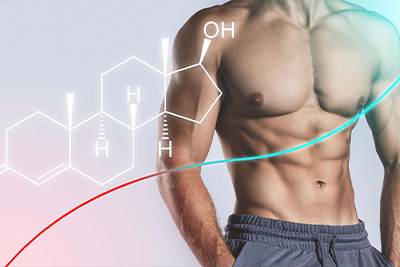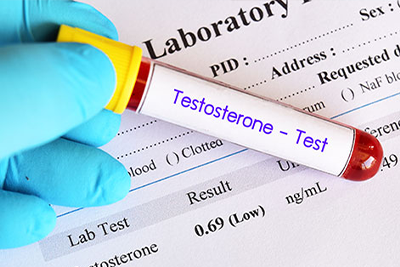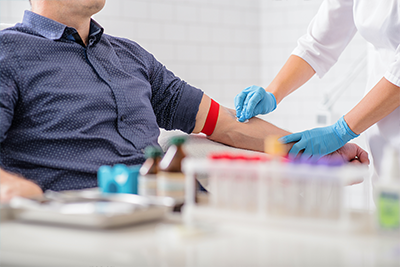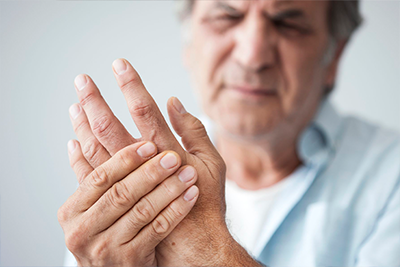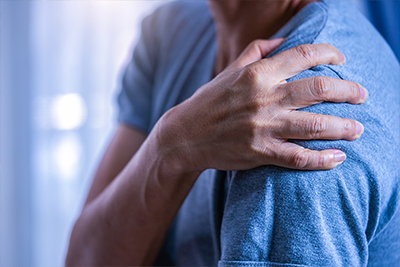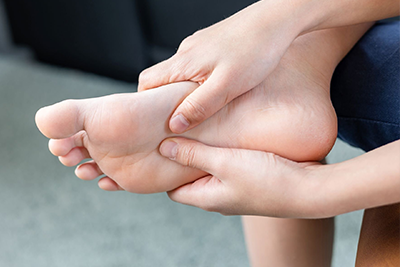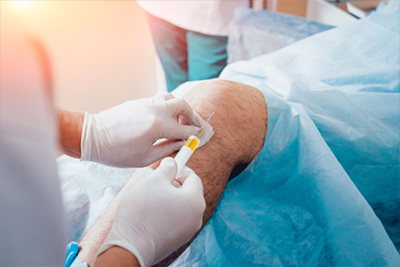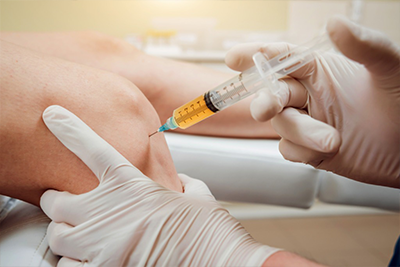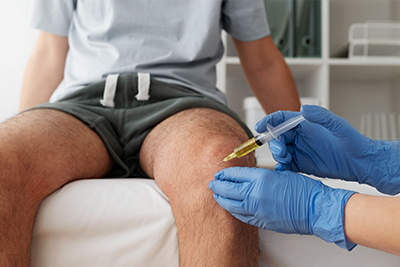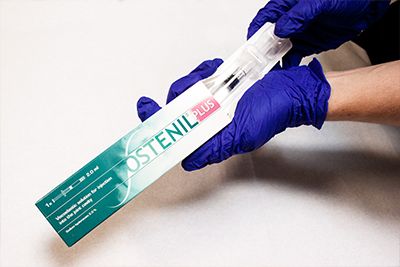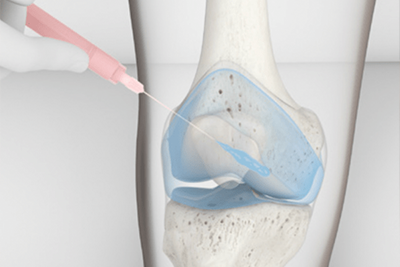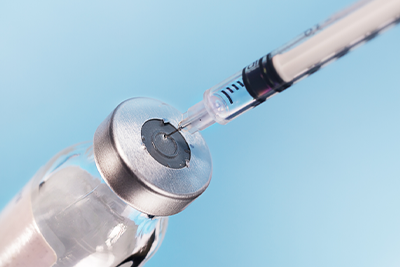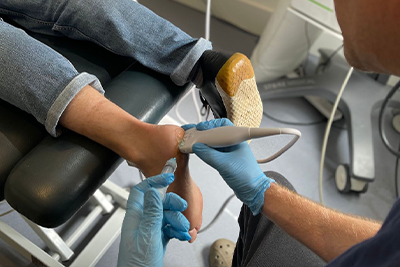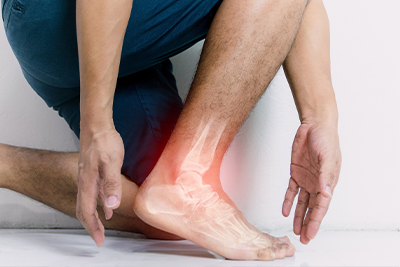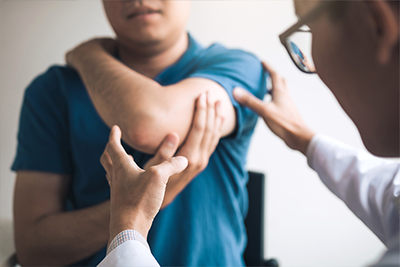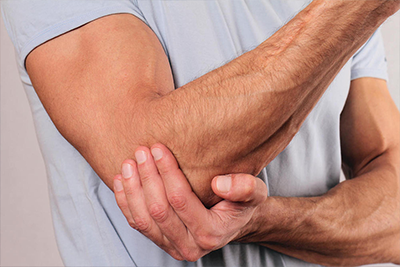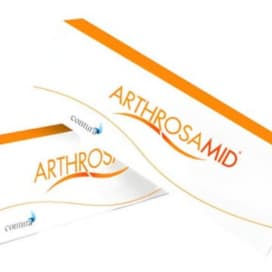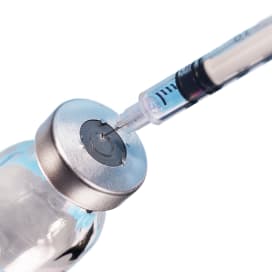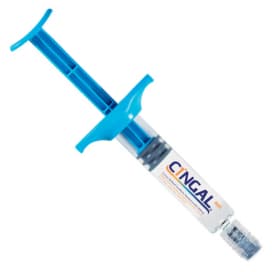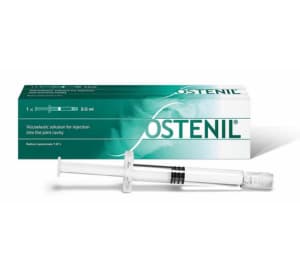AT A GLANCE
TREATS
Mild to Moderate Arthritis
Anaesthesia
None Needed
Duration
30 minutes per session
Recovery
No Downtime
Non-invasive
Highly cross linked for longer lasting benefits
Minimal side effects
Combined with injections therapy for optimal results
DUROLANE is a single-injection hyaluronic acid treatment for knee osteoarthritis
Durolane is a viscosupplement used to treat osteoarthritis, a degenerative joint condition marked by cartilage deterioration and joint inflammation. It is a highly cross-linked hyaluronic acid (HA) formulation that provides a safe and effective treatment option for individuals experiencing osteoarthritis-related pain and mobility challenges.
Durolane TREATMENT
Vale Health Clinic Tunbridge wells
Durolane is a valuable treatment option for individuals dealing with osteoarthritis-related pain and limited mobility. Its highly cross-linked hyaluronic acid formulation provides long-lasting relief, improves joint function, and has minimal side effects.
Administered through ultrasound-guided injections, Durolane ensures precise delivery, maximizing therapeutic effectiveness for osteoarthritis patients.
As part of a comprehensive care plan, Durolane plays a key role in improving mobility and overall quality of life for those affected by this debilitating condition.
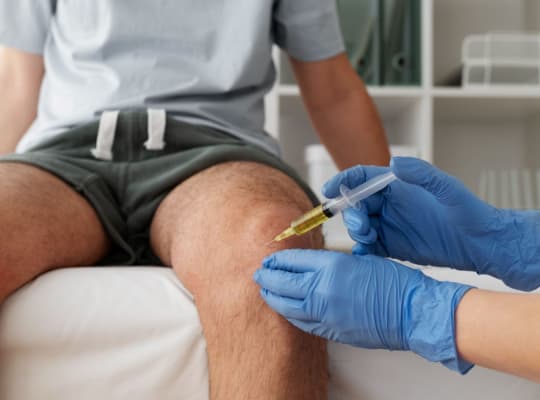
Durolane is formulated from non-animal, stabilised hyaluronic acid sourced through a fermentation process.
Hyaluronic acid is a naturally occurring molecule found in synovial fluid, where it plays a crucial role in lubricating and cushioning joint surfaces, as well as absorbing shock.
In Durolane, the hyaluronic acid molecules are highly purified and undergo a proprietary cross-linking process, resulting in a gel-like formulation that provides improved durability and prolonged effectiveness within the joint space.
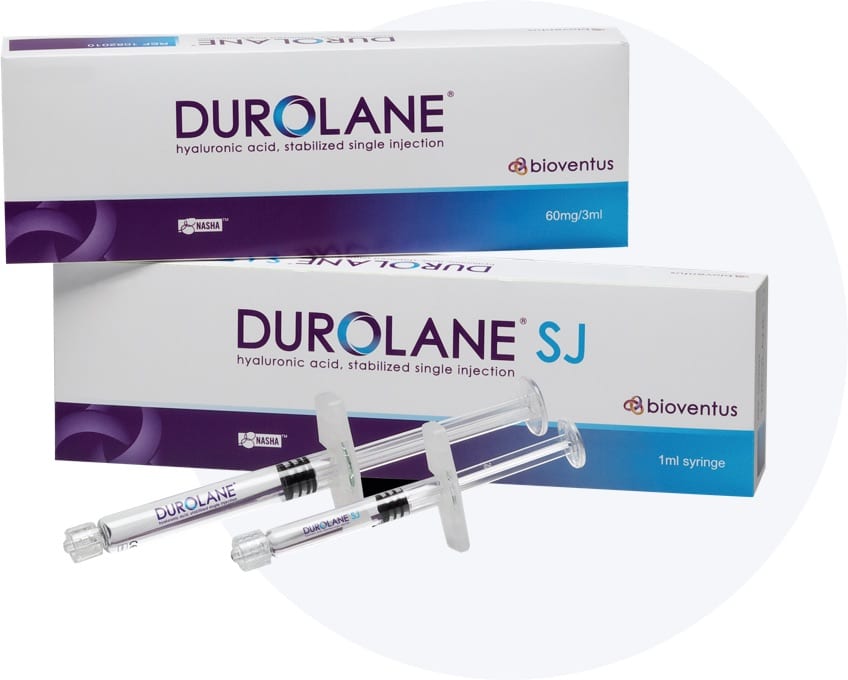
How does shockwave therapy work
Shockwave therapy, known for its ‘mechanism of action’, involves the use of a specialized device to deliver acoustic energy through the skin to the injured part of the body. The shockwaves, which are mechanical and not electric, consist of audible, low-energy sound waves that increase blood flow to the injured area.
This therapy operates through two primary modes of action to alleviate persistent tendon pain. Firstly, the shockwaves work to desensitize nerve endings, often resulting in an immediate reduction in pain. Secondly, and perhaps most importantly, the shockwaves induce controlled micro-trauma (microscopic damage) to the tissues. This action encourages the body to respond by enhancing blood circulation and metabolism in the affected area, thereby activating and accelerating the body’s natural healing response. Additionally, shockwaves can assist in ‘breaking down’ disorganised tissue and calcifications. For treatment to be optimal we would normally recommend combining this treatment with injection therapy and a rehabilitation programme.
Are there any side effects associated with Ostenil Plus?
What Are the Advantages of Ostenil for Sports Enthusiasts and Athletes?
Ostenil injections have become increasingly popular among athletes, particularly football players, who seek relief from joint discomfort resulting from intense physical exertion.
Featuring hyaluronic acid as its primary ingredient, these injections offer enhanced joint lubrication and cushioning, thereby reducing friction, easing pain, and improving mobility to enhance performance on the field.
The non-invasive nature and minimal side effects of Ostenil make it an appealing option for athletes aiming to preserve joint health and quickly return to their training and competitive activities.
Implementing injury prevention measures such as warm-up routines, conditioning exercises, and recovery strategies further bolster joint health and overall athletic prowess.
How is Ostenil produced
Ostenil is commonly manufactured through a method referred to as bacterial fermentation.
In this process, specific bacterial strains, typically Streptococcus zooepidemicus, are chosen for their capacity to generate hyaluronic acid. These bacteria are cultivated in a suitable growth medium that contains carbohydrates like glucose or corn syrup, serving as a carbon source. Through fermentation, the bacteria produce hyaluronic acid as a byproduct of their metabolic processes.
The resulting sodium hyaluronate can then be utilized in orthopedic applications, such as treating conditions like Osteoarthritis, Knee Meniscus issues, as well as Shoulder or Hip Labral tears.
At Vale Health clinic we provide various payment options meaning you can spread the cost
Please book your free initial 10 minute free telephone or face-to-face consultation to ascertain the suitability of the shockwave and the different treatments we offer.
| Procedure | Practitioner | Price |
|---|---|---|
Durolane injection | Gary Edwards | £350 |
Highly Cross-Linked Hyaluronic Acid
One of the key attributes that sets Durolane apart is its distinction as the most highly cross-linked hyaluronic acid product on the market. Cross-linking involves chemically bonding neighboring hyaluronic acid molecules, which boosts the gel’s viscosity and durability. The increased level of cross-linking in Durolane offers several benefits:
Improved Durability
The cross-linked composition of Durolane enables it to endure mechanical stress and shear forces present in the joint environment, delivering prolonged lubrication and support.
Extended Residence Time
Thanks to its enhanced stability, Durolane stays in the joint space for a longer duration, extending its therapeutic benefits and minimizing the need for frequent repeat injections.
Enhanced Efficacy
The highly cross-linked nature of Durolane ensures a consistent and predictable response, leading to reliable symptom relief and functional improvement in patients with osteoarthritis.
What are the benefits of Durolane?
Durolane offers several benefits in the management of osteoarthritis symptoms, including:
Pain Relief
By replenishing the reduced levels of natural hyaluronic acid in the joint, Durolane offers lubrication and cushioning, helping to relieve pain and discomfort related to osteoarthritis.
Improved Joint Function
The viscosupplementation offered by Durolane improves joint mobility and flexibility, enabling patients to participate in daily activities with increased ease and comfort.
Minimal Side Effects
In contrast to cortisone injections, which can have systemic effects and pose a risk of cartilage toxicity, Durolane is generally well-tolerated and linked to minimal side effects. Its non-animal origin further lowers the likelihood of allergic reactions.
Long-Lasting Symptom Relief
Unlike cortisone injections, which may lead to systemic side effects and potential cartilage damage, Durolane is typically well-tolerated and associated with few adverse reactions. Additionally, its non-animal source reduces the risk of allergic responses.
How is the Ultrasound-Guided Durolane Injection Procedure performed?
The administration of Durolane typically involves an ultrasound-guided injection technique to ensure precise placement within the affected joint. Here is a step-by-step guide to the procedure:
Patient Preparation
The patient is positioned comfortably on an examination table, with the target joint exposed and accessible. The skin overlying the injection site is cleansed with an antiseptic solution to reduce the risk of infection.
Ultrasound Imaging
A high-frequency ultrasound probe is placed over the target joint to visualize the joint anatomy and confirm the location of osteoarthritic changes, joint effusion, and synovial fluid distribution.
Injection Site Identification
Using real-time ultrasound guidance, the healthcare provider identifies the optimal injection site within the joint space, ensuring accurate placement of the needle for Durolane delivery.
Anesthesia Administration
Local anesthesia may be administered to numb the skin and underlying tissues at the injection site, minimizing discomfort during the procedure.
Needle Insertion
A sterile needle is carefully inserted into the joint space with the assistance of ultrasound guidance, utilizing the visual feedback from the ultrasound monitor. The needle is gradually and accurately advanced to the target area within the joint.
Durolane Injection
Once the needle is accurately positioned in the joint space, Durolane gel is injected slowly and steadily. The volume and technique of the injection may differ based on the size and severity of the joint condition.
Post-Injection Assessment
After the injection, the healthcare provider may conduct a quick examination to assess the distribution of Durolane within the joint and ensure proper placement. Any remaining joint effusion or swelling can be addressed as necessary.
Post-Procedure Care
Following the injection, patients are advised to refrain from strenuous activities and to use ice packs intermittently to help minimise inflammation and discomfort. They can gradually return to their normal activities under the guidance Gary the injecting practitioner
WHAT DO I NEED TO DO AFTER THE PROCEDURE?
After the procedure, typically we dvise refraining from engaging in strenuous physical activities for several days to allow your body to recover optimally. It’s essential to prioritise hydration by drinking plenty of water to help flush out any toxins and aid in the healing process. If you experience any discomfort or pain, Paracetamol can be safely used for pain management as needed.
It is important to follow your clinician post-procedure instructions carefully and attend follow the knee rehabilitation programme.
Athlete's Journey: Pain Relief & Performance Enhancement
David Thmpson on Injections
YOUR SIMPLE 4 STEP JOURNEY
Step 1. Free Intial consultation
Vale Health Clinic offers every patient a complimentary consultation with one of our injection practitioners. There is no obligation to undergo treatment. This consultation provides an opportunity to thoroughly discuss your concerns, as well as the benefits and risks associated with the procedure.
STEP 2.PHYSICAL EXAM AND ULTRASOUND
We will perform palpation and orthopaedic tests to help confirm your diagnosis. If required we perform a diagnostic ultrasound scan to assist in visualising the issue. We may also refer you for an X-ray or MRI, depending on the examination findings.
We will allow time to explain the procedure and answer any questions you may have. We make sure you understand the advantages and risks with the procedure before going ahead
STEP 3.INJECTION PROCEDURE
It’s important to let your practitioner know if you’re on any prescription or over-the-counter medications. You may be asked to stop taking aspirin or anti-inflammatory tablets, which can increase the risk of bruising. It’s also important to stop smoking cigarettes and e-cigarettes before and after the procedure because they can disrupt the healing process.
Local anesthetic is not needed for this procedure and the procedure is tolerated very well.
STEP 4:RECOVERY AND FOLLOW UP
Following the procedure, most individuals can return home and resume their normal activities. Our clinical team will be available to offer water and provide guidance on post-injection care.
For the next 48 hours, it’s advisable to refrain from strenuous activities and alcohol consumption.
A follow-up appointment will be scheduled for 6 weeks after the procedure to review the progress.
MEET THE TEAM
Gary Edwards
Doctor of Chiropractic and Injection therapy
Book Your Consultation
To book you free consultation, please complete the form below. One of our practitioners will contact you to discuss your condition and schedule your appointment.
Discover Our Top-Rated Treatments
RELATED OSTEOARTHRITIS TREATMENTS
Read Our Google Reviews

What our clients say
★ ★ ★ ★ ★ 5 Star
April 2024 Jaqui S. | Knee Arthritis
After my consultation with Jon l felt confident enough to go ahead with my treatment on my knee for arthritis. Having a fairly new injection of arthrosamid l was fairly ambivalent about the outcome but 9 months on it was well worth the money and the outcome. I have had no pain at all in my knee and would totally recommend this treatment at this clinic.
What our clients say
★ ★ ★ ★ ★ 5 Star
April 2024 Jaqui S. | Knee Arthritis
After my consultation with Jon l felt confident enough to go ahead with my treatment on my knee for arthritis. Having a fairly new injection of arthrosamid l was fairly ambivalent about the outcome but 9 months on it was well worth the money and the outcome. I have had no pain at all in my knee and would totally recommend this treatment at this clinic.


